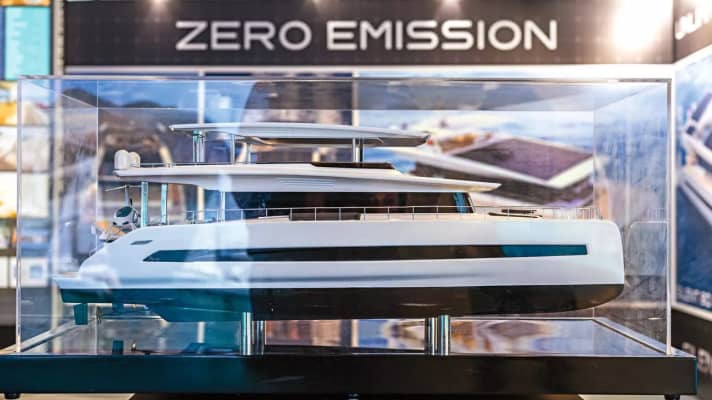Electric special: Market overview of insurance for e-boats
Gernot Apfelstedt
· 18.07.2022


Not insuring your boat is playing with fire, whether in the figurative or literal sense of the word. But yacht insurance providers and especially their risk carriers want to be able to calculate this "risk". Electric boats are a different matter. The technical components installed in such boats harbour high risks for the insurance industry - especially in the initial phase of e-mobility on the water - due to a lack of construction and installation regulations. The loss ratios speak volumes. This prompted BOOTE to enquire with some providers about their approach to insuring electric boats.
The answers varied in detail and sophistication, but all had one thing in common: at least boats with relatively low engine power are covered. At the insurance agency Harry Minor (Nautima), the limit is 10 kW; for more powerful engines, Minor can currently only make an offer in individual cases after consulting the specialist department at Mannheimer. "The reinsurers are still cautious in their risk assessment." Pantaenius, on the other hand, even insures e-boats up to 40 kW without further examination. Above 40 kW, the insurance specialist, which already had around 700 boats with an electric main drive in this power class in its portfolio ten years ago and a loss ratio of 500 per cent and more, now takes a very close look. This means that individual cases are examined by experts. If a complete system from one manufacturer is installed, there is nothing to prevent full cover. If this is not the case (unknown drive, individual components), Pantaenius excludes scorching and scorching damage, demands a higher premium or waves goodbye. See the interview with Holger Flindt, head of the claims department, in BOOTE 1/13.
Insurance broker Wehring & Wolfes has a similar perspective when it comes to risk assessment: "In boats with electric outboard motors from well-known manufacturers, the integrated systems of motor with batteries and charging unit are technically well-developed and unproblematic in terms of safety. All components are harmonised with each other and therefore allow safe operation," explains Managing Director Rainer Kugler. "Our insurers also take a similar view when the permanently installed electric drive has a relatively low output and coordinated components are also used. For boats with permanently installed electric motors with relatively high power, the insurers we work with have different and possibly higher requirements for technically correct construction and, above all, for the correct combination of battery and charging management components. These elements must be technically harmonised and generally come from one manufacturer as a system."

From Firmenich Yachtversicherungen's point of view, it is very important that the electric motors and battery packs are approved for use on the water and are protected against water ingress. "That's why, when we receive enquiries, we look at which manufacturers the motors/batteries are from and, if they are unknown makes, we check how they are built and whether they are approved," says head Adrian Zühr. "It can sometimes happen that we don't make an offer or exclude damage that is directly related to the electric motor/batteries from the insurance cover."
Yacht-Pool founder and CEO Dr Friedrich Schöchl has no reservations when it comes to electric boats. Since the first edition of Silent Yachts (prototype "Solarwave", BOOTE 3/12), Yacht-Pool has practically been the exclusive insurer of these innovative solar catamarans, although the risk carriers initially "took cover" in their own way during their pioneering phase due to the high battery content and the technically demanding design. "Thanks to our background in yacht building, we were confident that we could assess this risk," recalls Schöchl. The policyholders have repaid their trust with no claims to date.
You can read more about e-boat insurance here soon.
The article "Incalculable risk?" can be found in BOOTE issue 08/2022 from 13 July 2022 at newsstands, online directly in the Delius Klasing Shop - and already here.

